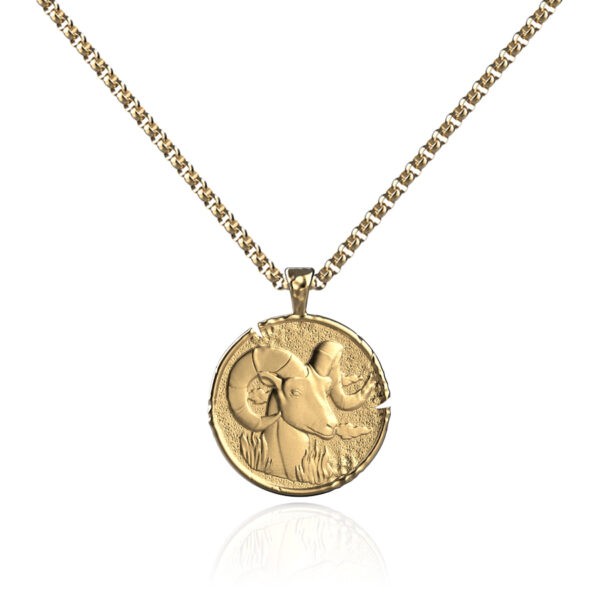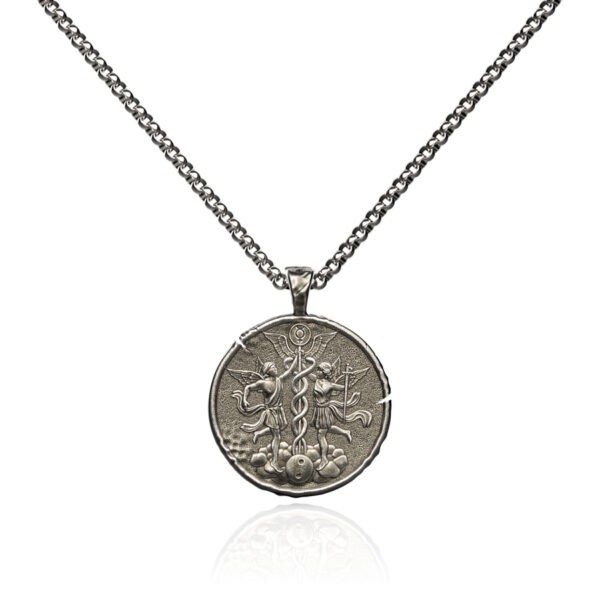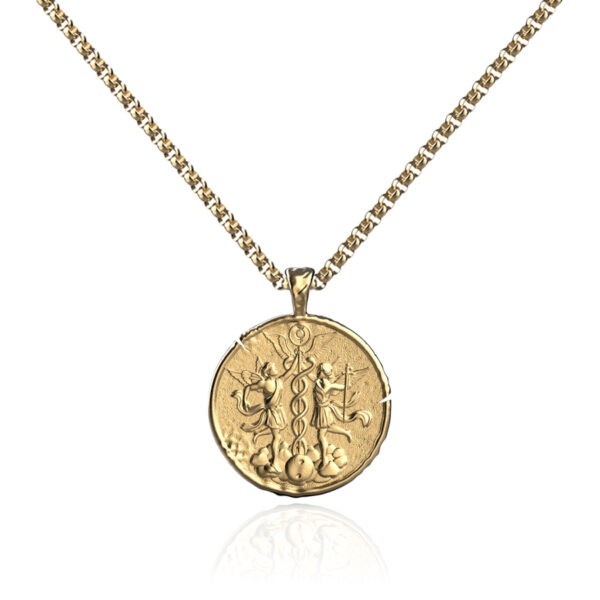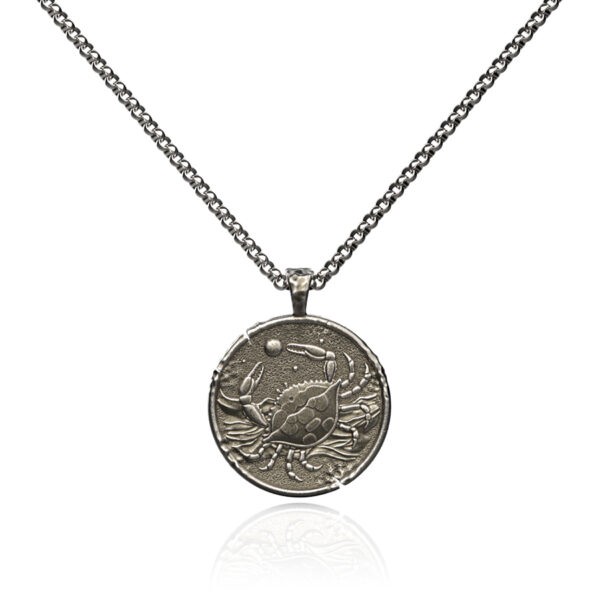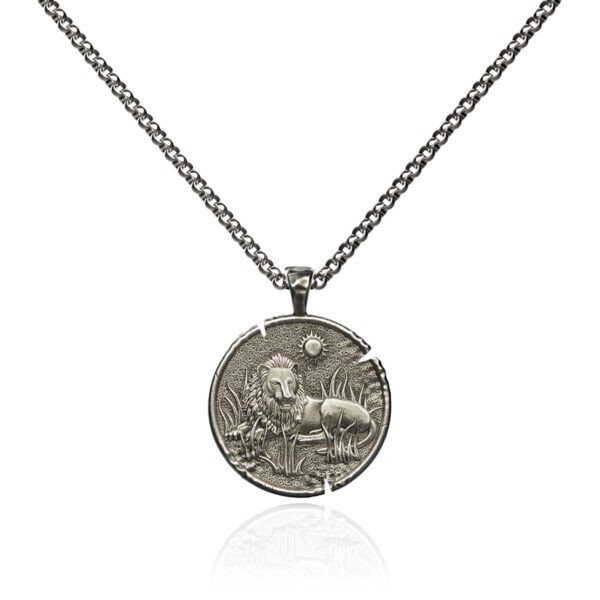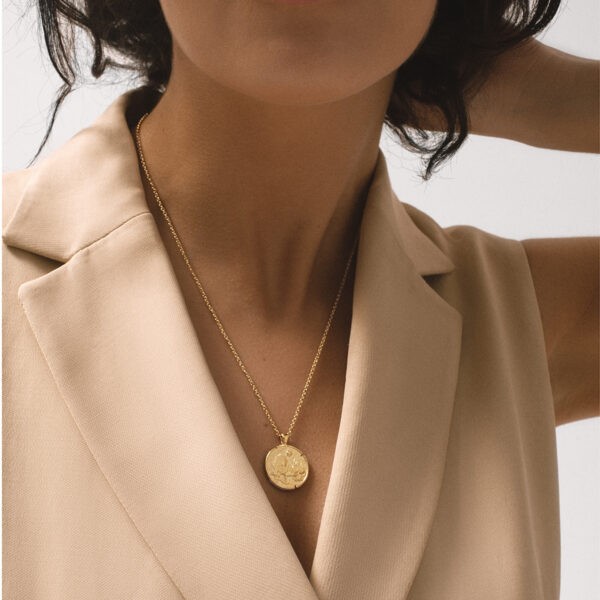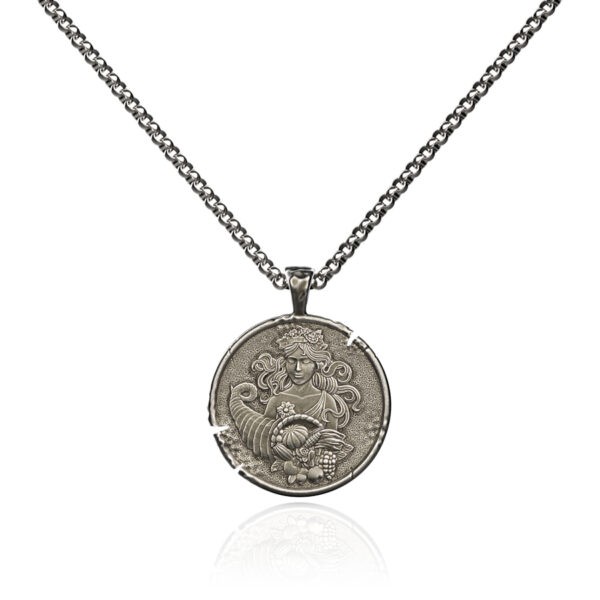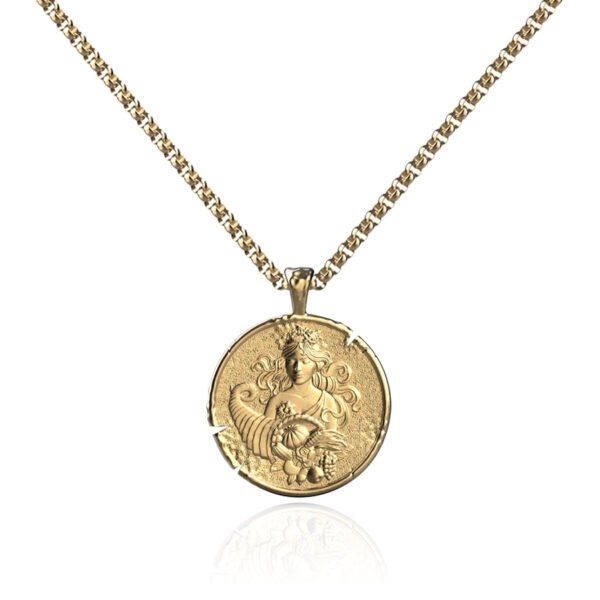Gold-plated silver is an elegant alternative to solid gold, combining the beauty of a precious metal with an affordable price. A thin layer of gold applied to silver creates a luxurious appearance that attracts jewelry owners seeking style and elegance. However, this unique combination of metals requires special care to maintain its original beauty.
Many people wonder why gold-plated jewelry quickly loses its shine despite careful maintenance. There are several reasons, ranging from natural chemical processes occurring in the metals to everyday habits related to wearing jewelry. Understanding these factors opens the way to effective protection of favorite pieces.
Proper care of gold-plated silver is not a complicated task but requires consistency and knowledge. From cleaning methods to storage techniques, every detail matters for the durability and shine of the jewelry.
What factors cause gold-plated silver to lose its shine
Gold-plated silver loses its shine due to many chemical and physical processes. The thin layer of gold on silver is susceptible to various environmental influences that accelerate its degradation and change in appearance.
Natural oxidation and darkening processes of the metal
Oxidation is a natural process during which the metal reacts with oxygen present in the air. Silver beneath the gold layer oxidizes particularly quickly, turning into silver sulfide. When silver oxides accumulate under the plating, the jewelry loses its characteristic luster and takes on a matte appearance.
This process occurs regardless of how carefully the jewelry is cared for because oxidation is a natural state of precious metals. However, proper protection can significantly slow it down and delay the appearance of the first signs of degradation. The thin gold layer, usually only a few microns thick, serves as the first barrier against this process.
Hydrogen sulfide present in the air, especially in cities and near the sea, also plays an important role in the metal darkening process. It attacks both the gold and the silver beneath it. The chemical reaction between hydrogen sulfide and silver creates a dark layer visible as discoloration on the jewelry.
The impact of moisture and condensation on the surface
Moisture is one of the main causes accelerating the loss of shine in gold-plated jewelry. Water that penetrates beneath the gold layer promotes silver oxidation and speeds up chemical processes destructive to jewelry.
Condensation occurring in bathrooms, kitchens, and other humid rooms causes particularly significant problems. The combination of water vapor with hot and cold temperatures accelerates chemical processes on the metal surface. Moisture can accumulate in crevices and cracks in jewelry, creating ideal conditions for developing dark deposits and corrosion.
Experts recommend storing jewelry in conditions where relative humidity ranges from forty-five to fifty percent. The temperature should be maintained steadily between seventeen and twenty-four degrees Celsius. These ideal conditions minimize the risk of condensation and oxidation of silver beneath the plating.
Practical solutions to eliminate the effects of moisture include storing jewelry in dry places, away from sources of moisture. Containers containing silica gel or anti-oxidation strips absorb excess moisture from the environment and protect the jewelry.
The role of cosmetics and perfumes in wearing off the gold plating
Cosmetics, perfumes, and lotions contain chemical substances that can erode the gold layer and attack silver. Alcohol, acids, and oils in these products act abrasively and chemically on delicate gold plating, causing its gradual degradation.
Each contact of jewelry with these substances gradually damages the surface. After some time, the gold layer chips and begins to flake off in small amounts. The jewelry then shows a silver color beneath the gold plating, especially on edges and indentations.
Main chemical substances threatening gold plating:
- Alcohol in perfumes dissolves protective barriers of the gold plating
- Acids in deodorants corrode the gold layer
- Oils in creams and lotions accumulate under the gold plating
- Chlorine in cleaning products dissolves gold
- Ammonia in hair dyes attacks the silver beneath the layer
Human skin that secretes sweat with high acidity as well as salt from sweat also accelerates the wearing off of gold plating. People with more acidic skin pH may experience faster degradation of their jewelry.
Methods for cleaning gold-plated silver without damage
Cleaning gold-plated silver requires exceptional care and knowledge. Every treatment must be gentle and focused on removing dirt without damaging the thin layer of gold protecting the silver.
Cleaning with soap and water as a basic technique
Water with mild soap is the safest and least invasive method for cleaning gold-plated silver. Warm water dissolves accumulated dirt and deposits on the surface without aggressive effects on the metal.
Preparing an appropriate solution requires a few simple steps. Fill a bowl or glass with warm water at a temperature no higher than thirty-eight degrees Celsius. Then add a few drops of mild dishwashing soap that does not contain harsh chemicals. Using a soft cotton cloth or flannel, gently wipe the jewelry with careful circular motions.
After brief cleaning, rinse the jewelry thoroughly in clean, boiled water or distilled water. Drying must be immediate using a soft cloth to prevent water spots from forming. The jewelry should be completely dry before placing it back into its box.
A fifteen-minute soak in such a solution is sufficient to clean dirty parts. Much longer soaking can lead to moisture penetrating under the gold plating and accelerate oxidation of the silver beneath the gold layer.
Natural cleaning solutions for delicate materials
Natural cleaning agents provide a safe alternative to chemical products containing harsh substances. Many household ingredients have cleansing properties without risk of damaging either gold plating or silver.
A solution of white vinegar and distilled water in a one-to-one ratio creates a mild cleaning agent. Baking soda dissolved in water serves as a gentle abrasive that removes deposits without penetrating the metal. Lemon juice contains acids that naturally dissolve deposits but requires very short contact time, no longer than five minutes.
Tea parawat prepared from fresh leaves or natural extracts can be used for gentle cleaning of gold-plated jewelry. Milk, especially due to its lactic acid content, is a surprisingly effective cleaning agent. Jewelry is soaked in milk for a few minutes and then gently wiped with a soft cloth.
It is essential to use brushes with soft synthetic or natural bristles that do not scratch the metal surface. Never scrape gold-plated jewelry with hard tools, metal brushes, or rough sponges. Such actions will cause irreversible damage to the gold layer.
Proper tools and materials for safe cleaning
Choosing the right cleaning tools is half the battle in maintaining gold-plated silver in good condition. Improper materials can cause irreversible damage to the plating and the silver beneath.
Tools and materials:
- Thick soft cotton cloths
- Microfiber cloths specifically for jewelry cleaning
- Soft-bristled brushes for hard-to-reach areas
- Ceramic bowls for preparing cleaning solutions
- Distilled water instead of tap water
- Natural soaps without chemical additives
Avoid rough paper, metal cleaning brushes, specialized metal polishes, and very hard sponges at all costs. Alcohol-based cleaners should have concentrations below fifty percent to avoid dissolving the gold layer. Ultrasonic cleaning devices can be harmful to gold-plated jewelry due to intense vibrations.
Materials that may leave residues on jewelry include toilet paper, paper towels, and newspaper sheets. These materials contain fibers that can easily stick to wet jewelry. Kitchen paper towels sometimes contain chemical additives that can penetrate the pores of silver.
Tip: Cleaning gold-plated silver should be done infrequently, no more than once a month or even once every two months, to maximize the durability of the plating and reduce the risk of damage.
How to store gold-plated silver to preserve its shine
Storing jewelry is as important an aspect of care as cleaning and daily maintenance. Proper storage conditions significantly slow down the degradation processes of gold-plated silver and maintain its shine.
Ideal storage conditions at home
Gold-plated silver requires special storage conditions to keep its beauty for many years. Temperature, humidity, and light exposure are three key factors that must be controlled and monitored.
Jewelry is best stored in a cool, dry place where the temperature does not change abruptly. The ideal temperature ranges from fifteen to twenty-four degrees Celsius, although a range of eighteen to twenty degrees is optimal. Relative humidity should be low, between forty-five and fifty percent.
Direct sunlight can fade gold plating and create conditions that promote the oxidation of silver beneath the gold layer. Dark places, such as closed cabinets, drawers, or specialized jewelry boxes, are ideal locations for storage. Jewelry should be kept at least five centimeters away from heat sources such as stoves, radiators, or halogen lamps.
Bathrooms are particularly poor storage locations due to high and fluctuating humidity. Kitchens should also be avoided because of sudden temperature changes, exposure to chlorine, and cooking fumes. Windows and exterior walls should not be used for storage either due to temperature effects and condensation.
Selecting Appropriate Containers and Protective Packaging
The type of container used for storage is crucial for protecting jewelry from damage. Different types of packaging offer varying levels of protection and environmental isolation.
Cases lined with soft materials such as velvet, linen, or organic cotton provide excellent protection against scratches. Wooden jewelry boxes with compartments prevent friction between jewelry pieces. Plastic containers with airtight seals minimize exposure to moisture, air, and dust settling in the environment.
The most protective are hermetically sealed bags made from soft, anti-oxidative material. Such packaging completely isolates jewelry from contact with moisture, air, corrosive gases, and oxygen present in the atmosphere.
Parchment paper has moisture-absorbing properties; therefore placing it at the bottom of a container before inserting jewelry is a good practice. White paper should not come into direct contact with metal due to potential chemical interactions and the possibility of leaving residues.
| Container Type | Protection Level | Storage Duration | Cost |
|---|---|---|---|
| Paper Box | Low | Up to 3 months | 5–15 PLN |
| Wooden Casket | Medium | Up to 1 year | 30–80 PLN |
| Plastic Container with Airtight Seal | High | Up to 2 years | 20–50 PLN |
| Antioxidant Bag | Very High | Up to 3 years | 10–25 PLN |
| Professional Jewelry Packaging | Maximum | Up to 5 years | 50–150 PLN |
Isolation from Materials That Can Accelerate Abrasion
Certain materials stored next to jewelry can accelerate its degradation and damage the gold plating. Physical separation prevents unwanted chemical and physical interactions between items.
Natural rubber and silicone can emit hydrogen sulfide, which tarnishes silver and gold plating very quickly. Low-grade wood and low-quality paper contain acids that erode the gold plating and accelerate oxidation. Many plastics contain phthalates, which can penetrate the jewelry and create deposits on its surface.
Jewelry should be stored separately from items containing potentially hazardous materials. Ideal are high-density polystyrene packaging, stainless steel containers, or high-quality archival paper. Each piece of jewelry should have its own separate space in the container to avoid mutual abrasion of individual parts.
Plastic components should be high quality and labeled as safe for precious metals and delicate jewelry. Jewelry manufacturers usually provide appropriate storage materials together with the purchase of new products or as promotional items. If the container does not come from the manufacturer, its certification should be checked.
Tip: Placing antioxidant strips or small silica gel packets inside the jewelry container will significantly reduce humidity and extend the lifespan of the gold plating by several additional years of use.
Daily Habits to Protect Gold-Plated Silver from Damage
Daily care and mindful habits have a huge impact on the durability of gold-plated jewelry. Simple, systematic actions drastically reduce the risk of damage and prolong the time during which the gold plating retains its shine and original appearance.
Timing for Removing Jewelry Before Daily Activities
The timing of removing jewelry matters for its durability and safety. Taking off jewelry at the right time protects it from exposure to chemicals and moisture, which are most destructive.
Jewelry should be removed before every bath or shower without exception. Chlorine in pool water dissolves gold plating especially quickly, destroying the entire layer within minutes of intense exposure. Washing dishes requires removing jewelry because hot water and soap can penetrate beneath the gold plating and accelerate oxidation.
Before applying creams, body lotions, or protective balms, jewelry must also be removed at least several minutes in advance. Greasy substances can accumulate under the gold plating and speed up oxidation of the silver beneath the gold layer. At the gym or during intense physical exercise, jewelry should be removed due to sweating.
Perfume should be applied fifteen to twenty minutes before putting on jewelry so that the alcohol in perfumes can fully evaporate. Alcohol dissolves protective barriers of the gold plating.
Deodorants and antiperspirants contain chemicals that can remain on jewelry throughout the day and accelerate corrosion.
Avoiding Contact with Chemicals and Personal Care Products
Chemicals pose the main threat to gold-plated silver. Eliminating contact with these substances significantly extends the lifespan of jewelry and prevents premature degradation.
Substances and products to avoid:
- Solvents and acetone in paints and varnishes
- Detergents in cleaning gels and liquids
- Chlorine bleaches in sanitary products
- Hair dyes containing ammonia
- Sunscreens with chemical filters
- Ointments and gels for injuries containing chemicals
- Hand sanitizers containing alcohol
- Deodorants and antiperspirants for sweat
When working in the garden, jewelry should be removed before handling synthetic fertilizers and pesticides. Chlorine in groundwater and pool water attacks gold plating much faster than regular tap water. Salt in sea air also accelerates the oxidation and wear of gold-plated jewelry.
Freshly painted nails emit solvent odors for several to a dozen hours. Jewelry should only be worn once the solvents have completely evaporated. Antibiotic ointments for wounds contain substances that can remain on the skin for many hours.
Regular Wearing as a Natural Way to Maintain Shine
Paradoxically, wearing jewelry regularly reduces the risk of its rapid degradation. Jewelry worn regularly maintains a better shine than pieces stored on shelves for long periods.
When jewelry is worn regularly, natural skin oils create a thin protective layer on the metal surface. This layer reduces direct contact between silver and oxygen as well as oxidizing substances present in the air. The kinetic energy from wearing jewelry helps maintain the bonds between gold and silver in better condition.
However, wearing must be conscious and cautious due to contact with chemicals and moisture during the day. Proper removal of jewelry before potentially harmful activities is crucial. Jewelry worn regularly needs to be cleaned more often, about once every two weeks, to prevent buildup of deposits.
Tip: planning to wear jewelry on days when you know you won’t be swimming, doing intense workouts, or performing household chores involving chemicals maximizes the durability of gold plating and maintains the jewelry’s shine.
Handcrafted, Unique Gold-Plated Silver Jewelry at Matiere47 Store
Matiere47 is a brand creating original handmade jewelry that combines elegance with deep symbolic meaning. Each collection is crafted with passion and attention to the smallest details, preserving the unique character of every piece. The jewelry is made from 925 sterling silver, often enhanced with gold plating, which creates a luxurious look and adds shine.
The store specializes in creating meaningful jewelry that not only adorns but also carries emotional and spiritual values.
Every piece in the collection has been designed to reflect the personality and lifestyle of the wearer. Gold-plated silver offers the perfect combination of beauty and affordability, maintaining the noble character of gold with the greater durability of silver.
Zodiac Jewelry Collection
Zodiac Jewelry Collection is a unique blend of astrology and jewelry art, attracting lovers of both zodiac symbolism and subtle elegance. Each necklace represents one of the twelve zodiac signs, crafted with precision and attention to detail. The zodiac symbols are carefully engraved on pendants, creating delicate and lightweight forms that suit any outfit.
The jewelry is available in both 925 sterling silver and a gold-plated version using 24-karat gold. The gold plating gives the necklaces a warm, golden hue that pairs beautifully with various skin tones and clothing colors. The openwork designs add lightness, making the jewelry subtle and elegant. Zodiac necklaces make an excellent gift choice, as the personalized pendant gives them a unique character and deeper meaning.
View the jewelry from the Zodiac collection
Men’s zodiac necklace Aries
Previous lowest price was €73.
Women’s zodiac necklace Aries
Previous lowest price was €73.
Men’s zodiac necklace Taurus
Previous lowest price was €73.
Women’s Zodiac Necklace Taurus
Previous lowest price was €73.
Men’s zodiac necklace Gemini
Previous lowest price was €73.
Women’s zodiac necklace Gemini
Previous lowest price was €73.
Men’s zodiac necklace Cancer
Previous lowest price was €73.
Women’s zodiac necklace Cancer
Previous lowest price was €73.
Leo zodiac men’s necklace
Previous lowest price was €73.
Women’s zodiac Leo necklace
Previous lowest price was €73.
Men’s zodiac necklace Virgo
Previous lowest price was €73.
Women’s zodiac necklace Virgo
Previous lowest price was €73.
Lucky Cat Jewelry Collection
Lucky Cat Jewelry Collection is inspired by the symbolism of Maneki Neko, the Japanese lucky cat that has symbolized prosperity, good fortune, and positive energy for centuries. The collection combines traditional Japanese motifs with modern design to create stylish everyday accessories. Necklaces and bracelets are made from 925 sterling silver and are also available in a gold-plated version, which adds shine.
Each piece in the collection is designed with attention to detail, preserving the distinctive image of the waving cat with its paw raised upward. Additionally, the collection includes scented Maneki Neko candles that combine aromatherapy with interior decoration. These unique products not only fill rooms with a pleasant fragrance but also serve as lucky talismans. The Lucky Cat collection is an ideal choice for those who value symbolism and seek accessories with deeper meaning.
View the jewelry from the Lucky Cat collection
Lucky Cat Coin Amulet
Previous lowest price was €105.
Lucky Cat Necklace
Previous lowest price was €78.
Maneki Neko White Candle
Previous lowest price was €20.
Maneki Neko Red Candle
Previous lowest price was €20.
Japanese Prosperity Coin Bracelet on red silk cord
Previous lowest price was €67.
Lucky Cat Bracelet on Red Silk Cord
Previous lowest price was €67.
We encourage you to explore the full collection of gold-plated silver jewelry available at the Matiere47 online store. Each product is carefully packaged in an elegant box, making it a perfect gift for any occasion. Contact customer service for assistance in choosing jewelry and professional advice on caring for and wearing gold-plated silver.
When to Seek Professional Restoration for Gold-Plated Silver
Sometimes gold-plated silver requires professional care and repair.Recognition of signals indicating the need to visit a jeweler allows for quick intervention and avoidance of further damage.
Symptoms Indicating the Need for a Jeweler Visit
Several clear signs indicate that gold-plated jewelry requires professional care from an experienced jeweler. Noticing these symptoms should prompt contacting a specialist within a few days.
The appearance of discoloration, green or black deposits under the gold plating, signals advanced silver oxidation and corrosion. Deep scratches on the gold plating prevent home repair and require specialized treatment. Peeling or clearly flaking gold plating elements indicate the need for complete re-plating of the jewelry.
A change in the jewelry’s smell, especially a characteristic hydrogen sulfide odor, may indicate chemical processes occurring beneath the plating. Jewelry causing allergic skin reactions, such as itching or redness, may have microcracks in the protective layer. Loose gemstones, pearls, or decorative elements require immediate jeweler intervention to reattach them.
Jewelry that clearly changes color from shiny gold to matte gray or black after just a few weeks of wear may indicate a problem with the original plating. Very rapid wear of the plating suggests use of low-quality jewelry and the possibility of complete silver destruction in a short time.
Available Repair and Re-Plating Services
Jewelers offer various repair and maintenance services for gold-plated silver, each aimed at restoring the jewelry’s original appearance and shine. Professional treatments far exceed home care capabilities.
Professional cleaning removes dirt and deposits unreachable by home cleaning methods. A jeweler can use specialized ultrasonic equipment to clean even the most hidden spots, gaps, and recesses in the jewelry. Ultrasonics gently but effectively dissolve deposits without damaging the metal.
Re-plating jewelry is the most advanced service offered by jewelers. This process removes old, damaged, or worn gold layers and applies a new fresh layer using electroplating methods. The cost of this service usually ranges from fifty to two hundred USD per piece, depending on the size of the jewelry, thickness of the new layer, and technical capabilities of the workshop.
Structural repairs include welding broken elements, replacing damaged joints, and rebuilding destroyed parts of jewelry. Replacement of loose or lost decorative elements such as small beads or pendants can be performed by an experienced jeweler within a few days. Replacing damaged gemstone settings requires precision and experience.
Professional polishing removes scratches from gold plating without damaging the gold or underlying silver layer. This process requires specialized equipment and jeweler experience in handling delicate materials.
Preventive Treatments to Extend Jewelry Lifespan
Regular preventive treatments at a jeweler can significantly extend the lifespan of gold-plated jewelry.
Immediate interventions prevent serious damage and complete degradation of jewelry.
Annual professional inspections allow for early detection of problems before they worsen. An experienced jeweler can identify initial signs of damage, invisible to the owner, and provide professional recommendations. This saves time and money in the future, as early intervention is always less expensive than comprehensive repair.
Professional cleaning twice a year prevents the buildup of deposits that can get under the gold plating and accelerate silver oxidation. Such treatments are especially important for jewelry worn regularly and exposed to frequent contact with chemicals.
The use of special protective coatings, such as modern protective lacquers, may be suggested by the jeweler. These coatings create an additional protective barrier between the silver and the environment, protecting against oxidation and wear of the gold plating. These lacquers are safe and do not affect the appearance of the jewelry.
Replacing damaged parts before complete destruction of the entire piece is much more economical. The jeweler can replace a damaged connecting pin, link, or clasp instead of completely remodeling the jewelry. Sometimes replacing one small element saves the entire value of the jewelry.
Tip: Scheduled preventive treatments at the jeweler every six to nine months can extend the lifespan of gold-plated silver by even three to five additional years of use.
FAQ: Frequently Asked Questions
Can gold-plated silver be worn in the shower?
Wearing gold-plated silver in the shower is not recommended. Water, especially warm water, accelerates the breakdown of the thin layer of gold on the surface of silver. Soap, shampoos, and bath gels contain chemicals that can erode the gold plating and cause it to wear off.
Chlorine present in tap water attacks both gold and the silver underneath. Steam creates moisture that accumulates in jewelry crevices and accelerates metal oxidation. If jewelry gets accidentally wet, it should be immediately dried with a soft cloth and stored in a dry place.
How long does gold plating on silver last?
The durability of gold plating on silver depends on several factors and can range from one to five years. The thickness of the gold layer is crucial; typically, plating ranges from half to three microns. The thicker the layer, the longer it retains its shine.
Factors affecting durability:
- Frequency of wearing jewelry and intensity of use
- Contact with chemicals and cosmetics
- Storage conditions and exposure to moisture
- The quality of original plating applied by the manufacturer
- The acidity of sweat and natural skin pH of the wearer
Jewelry worn daily may require replating after two to three years. Jewelry worn occasionally can maintain its shine for up to five years with proper care.
Can gold-plated silver cause skin allergies?
Gold-plated silver rarely causes allergic reactions if the gold layer is intact and complete. Gold is a hypoallergenic metal and safe for most people.
However, when the gold plating begins to wear off, the silver underneath can cause irritation in sensitive individuals.
Some people are allergic to silver or the alloys present in the silver alloy, such as copper or nickel. Symptoms include itching, skin redness, rash, or burning at the site of contact with the jewelry. If the gold plating is damaged, direct contact of silver with the skin can lead to allergic reactions.
What is the difference between gold-plated silver and rolled silver?
Gold-plated and rolled silver are two different processes of applying a layer of precious metal. Gold plating involves electrolysis, during which a thin layer of gold deposits onto the silver. This layer typically ranges from half to three microns in thickness.
Rolling, also known as mechanical plating, is a mechanical process. A thick layer of gold is physically bonded to the silver under high pressure and temperature. The rolled layer is much thicker, often exceeding twenty microns. Rolled silver is more durable and resistant to wear than gold-plated silver. However, rolled jewelry is more expensive due to the larger amount of gold used.
How to recognize when gold-plated silver needs replating?
Several clear signs indicate the need for replating gold-plated silver. The most visible signal is the appearance of silvery or dark spots on the surface of the jewelry. This means that the gold layer has worn off and the silver is visible.
Symptoms requiring attention:
- Change in jewelry color from yellow gold to gray or silver
- Uneven surface with visible bumps or indentations
- Dark discolorations indicating silver oxidation
- Dull surface instead of shiny and glossy
- Skin irritation when wearing the jewelry
If the jewelry shows any of these symptoms, it should be consulted with a jeweler. Professional replating will restore the jewelry’s original appearance and protect the silver from further degradation.
Summary
Caring for gold-plated silver requires consistency, knowledge, and awareness of chemical processes that accelerate degradation of this beautiful material. Understanding causes of loss of shine—from natural oxidation processes of silver to effects of moisture, perfumes, and chemicals—allows for effective and proven protection methods.
Cleaning jewelry should be gentle and done infrequently to avoid damaging the thin gold layer that protects the silver. Storing it in dry, cool places in appropriate packaging forms the foundation for long-term protection and maintaining shine. Conscious daily habits such as removing jewelry before contact with water, chemicals, and cosmetics significantly extend its beauty and brilliance.
Professional care from a jeweler when needed is an investment in durability and appearance of your favorite jewelry for years to come. By following these practical tips and recommendations presented above, anyone can enjoy the beauty of gold-plated silver for many years while preserving its luxurious look and radiant shine.



